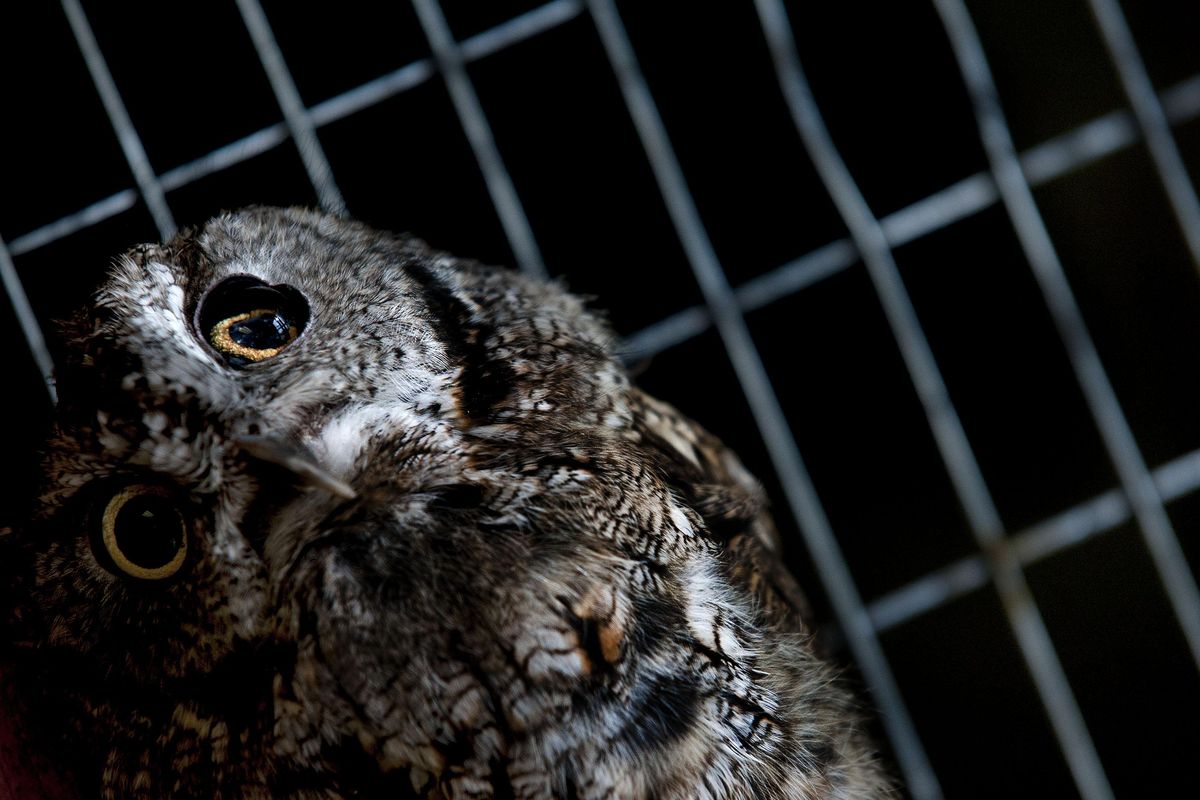Creepy creatures of Halloween deserve respect, wildlife officials say

In the opening scene of “Macbeth,” three Scottish witches brew a charm of “powerful trouble” for the play’s main character.
The spell requires a bubbling cauldron of animal parts: Toad guts, bat fur, snake skin, a wolf’s tooth and an owl’s wing.
More than 400 years after “Macbeth” was written, European literature and folklore continues to sway how we think about animals, says Dan Haas, a U.S. Fish and Wildlife Service employee in Burbank, Washington.
Some species can’t seem to shed their dark reputations.
“Nowadays, we don’t think of toads as witches’ familiars, or believe that people turn into werewolves,” Haas said.
But centuries of mistrust – fed by ancient myths – contribute to some of the common misconceptions about wildlife, overshadowing the beneficial role they play in the environment, he said.
“People are afraid of spiders. … They think that every time they’re near a bat, they’ll get rabies. And there are so many misperceptions about wolves,” said Haas, the visitor services manager for the Mid-Columbia River National Wildlife Refuge Complex, which includes the Hanford Reach National Monument.
For the second year, he and colleagues are putting on “Screech at the Reach,” a Friday educational event in the Tri-Cities designed to help children and adults distinguish fact from myth about six animals associated with Halloween.
“All of these critters are found in Washington, and most are found at the Hanford Reach,” Haas said. “We help people realize that … they aren’t just waiting to bite you or kill you.”
Spiders, bats, owls, toads, ravens and wolves are featured in the program. Wolves are the only animal not currently found at the 196,000-acre monument, which encompasses natural areas around the Hanford nuclear site. But wolves are expected to migrate through the area in the future, as Washington’s gray wolf population expands.
To understand how mythology shapes our views of wildlife, Haas read folklore and consulted with experts at the University of Washington’s Burke Museum. There were plenty of scary tales.
Stories about shape-changers, who could transform themselves from men to wolves, date to ancient Greece. They were often associated with cannibalism.
During the Middle Ages, the croak of a raven and the screech of an owl were considered omens of death.
Fear of bats was probably spread by Spanish conquistadors, who returned from the New World with stories about vampire bats, which bite birds and mammals and lap up the blood. They’re native to Mexico and parts of South America.
“That was the first moment in history when bats were connected with vampire legends,” said Rod Crawford, a curator at the Burke Museum.
Crawford’s specialty is actually spiders, whose ability to inspire fear remains a well-documented phenomenon.
“Based on personal experience, I’m certain it’s learned behavior, not instinctive,” he said.
When Crawford visits first-grade classrooms, many of the students are willing to hold spiders. As students get older, they’re more reluctant to handle them, probably because they’ve learned to fear spiders from adults, he said.
But with spiders, and other wildlife on the list, the fears are overblown and ignore the animals’ ecological value.
“Spiders are not a significant danger,” Crawford said. Only one family of Northwest spiders, called jumping spiders, has good enough vision to perceive people as distinct entities.
“When a typical house spider walks across your body, it doesn’t have any way of perceiving that it’s walking across a living creature,” Crawford said.
Bites are rare – Crawford has been bitten twice in 30-plus years of handling spiders – and few spiders have venom that can harm people, cats or dogs. Though, “if you happen to get bitten by a black widow, you’ll want to see a doctor,” he said.
Spiders are unappreciated, Crawford said, particularly given their valuable role in insect control.
“They’re the No. 1 predator of insects,” he said.
“Screech at the Reach” highlights other beneficial attributes of the Halloween creatures, including other types of pest control and in the case of ravens, cleanup of carrion.
A barn owl can eat up to 1,000 mice each year, while some toads consume up to 16 percent of their body weight daily in bugs. But bats on the Hanford Reach National Monument are even more voracious, eating about one-third of their weight nightly in insects.
For a 150-pound person, that’s the equivalent of eating 96 Big Macs, Haas said.
Contrary to folklore beliefs, bats aren’t blind; they don’t get caught in your hair; and less than 1 percent are carriers of rabies, Haas said. And even the vampire bats of Latin America have value. Scientists are studying anti-clotting properties in their saliva for medical applications.
Wolves, unlike their ferocious reputation in literature, prefer to avoid people, Haas said. Documented attacks on humans are quite rare.
He’d like to see both children and adults leave the event with a better understanding of the region’s native wildlife.
“If we can get them used to the idea that these creatures are living around them, and they aren’t scary, it goes a long way toward conservation,” Haas said.